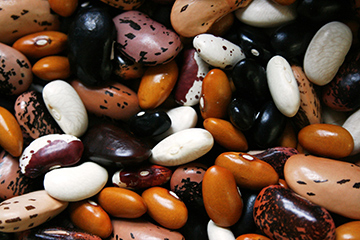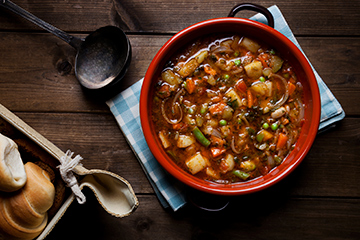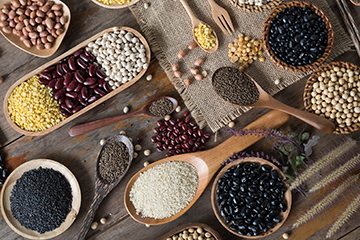Discover the benefits of including beans and other pulses in your diet
 Nutrition plays an important role in maintaining a healthy weight, because being overweight can lead to illnesses such as diabetes, heart disease and even cancer.
Nutrition plays an important role in maintaining a healthy weight, because being overweight can lead to illnesses such as diabetes, heart disease and even cancer.
Pulses are crops that are grown and harvested for their dry seeds and include a variety of beans, peas, chickpeas and lentils.
Benefits of pulses for your health
Pulses are very high in protein and fibre, and are low in fat. They also have high levels of minerals such as iron, zinc, and phosphorous as well as folate and other B-vitamins.
Pulses are low in fat and have no cholesterol. The high fibre content in pulses may help reduce "bad" LDL cholesterol and improve heart health.
Pulses aren’t only healthy but also economical and can be stored safely for long periods.
Other benefits of pulses includes the following:
- They help prevent diseases such as heart disease, cancer, high blood pressure and diabetes and can help with weight loss,
- They’re rich in fibre and can improve digestion, assist with reducing blood sugar spikes after meals, can improve colon health and lower blood cholesterol,
- They’re a source of non-haem iron (iron coming from plants) which is absorbed well by the body, especially when eaten with foods rich in vitamin C (e.g. guava, oranges, naartjies, etc),
- They’re a good source of plant protein which is low in fat and naturally free of cholesterol,
- We can eat them instead of meat or other animal foods and still be healthy, as they’re an economical source of protein,
- They help the environment as they’re water-efficient and help to keep the soil fertile and healthy, and
- They don’t require refrigeration to be stored before being cooked.
 How often should we eat dry beans, peas, lentils and soya?
How often should we eat dry beans, peas, lentils and soya?
One of the South African Guidelines for Healthy Eating state that dry beans, split-peas, lentils or soya should be eaten regularly.
If you’re going to eat pulses with meat, you should eat it at least 4 times a week. Also try to eat them on the days that you don’t eat meat.
If you don’t eat meat, fish, chicken, eggs or milk, you should eat dry beans and other pulses every day as part of a healthy eating plan that includes starchy foods and plenty of vegetables and fruit.
What is a healthy portion of dry beans and other pulses?
A single serving size is:
- ½ cup of cooked or canned dry beans, peas or lentils, or
- 3 tablespoons (45 ml) dry soya mince.
These amounts can be doubled if you’re if you’re a vegetarian.
Introducing pulses to your diet
If you’ve never eaten pulses, start including them in your eating routine slowly. Your body gets used to these foods, which means you will be able to reap the many health benefits that they have to offer.
Include dry beans, split-peas, lentils and soya in your eating plans:
- Use soya mince and dry beans to make minced meat and stews go further,
- When dry beans, split peas or lentils are combined with a starchy food (wholegrains) nuts or seeds, the proteins from the 2 foods complement each other and make a better quality protein,
- Include beans, peas and lentils in soups, stews, mince, pasta dishes or rice dishes,
- Keep a variety of canned legumes, such as lentils, kidney beans, chickpeas, for a quick meal (for instance salad with chickpeas or baked beans on whole wheat toast) or side dish such as bean salad for a braai,
- Consider adding 1 meatless (vegetarian) meal per week, for instance meatless Mondays, and use dry beans, split peas or lentils in place of meat.
 Find out more on how to prepare and introduce pulses into your eating plan.
Find out more on how to prepare and introduce pulses into your eating plan.
More information about eating dry beans, split-peas, lentils and soya.
- www.nutritionweek.co.za
- The Department of Health
National
Tel: 012 395 8770
Western Cape
Tel: 021 583 5663/2275
- The Association for Dietetics in South Africa (ADSA)
Tel: 011 - 061 5000
Email: info@adsa.org.za
- The Nutrition Society of Southern Africa (NSSA)
Tel: 082 667 4723
- The Heart and Stroke Foundation
Heart and Stroke Health Line: 0860 1 HEART (0860 143 278)


